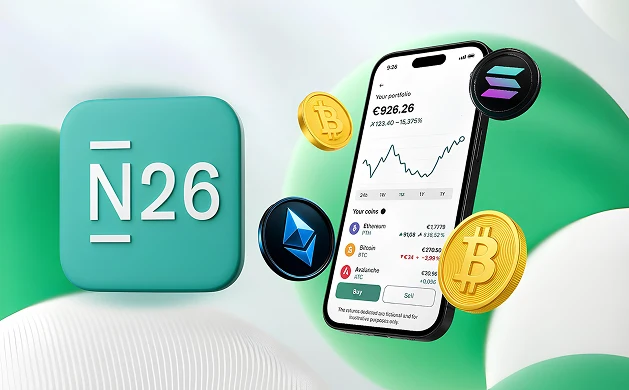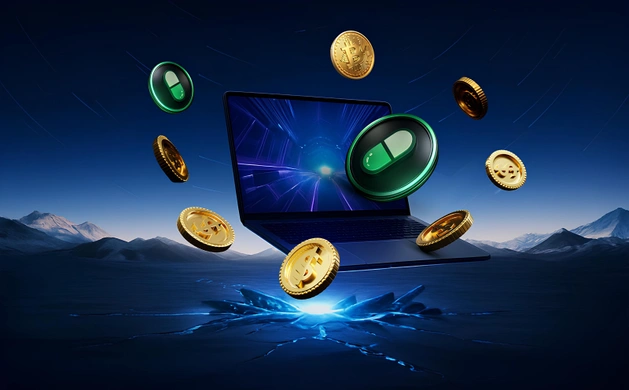What is LayerZero?

Summary: LayerZero is a blockchain protocol that connects previously disconnected networks, allowing applications to collaborate across chains in a more sound and efficient manner.
Its messaging activity peaked during the ZRO airdrop, a defining moment that sparked intense participation, debates over Sybil farming, and a decline in usage following the token’s launch.
Despite these hurdles, LayerZero remains at the core of hundreds of decentralized applications, steadily incorporating new networks and striving to unify the fragmented multichain ecosystem.
What is LayerZero?
LayerZero is an omnichain interoperability protocol that enables direct communication between blockchains like Ethereum, Binance Smart Chain, and Solana. It employs a proprietary technology that securely transmits messages by transmitting only the necessary proof data.
The protocol’s decentralized system relies on Oracles, such as Chainlink, to fetch data and Relayers to transmit it, ensuring accurate and secure message delivery. By eliminating the need for trust in a single intermediary, LayerZero improves reliability and reduces risks of manipulation.
Its modular design allows developers to build cross-chain applications, such as decentralized exchanges or NFT marketplaces, that can operate harmoniously across multiple networks. This approach addresses the challenge of blockchain fragmentation better than traditional bridges.

How Does LayerZero Work?
When we look deeper into LayerZero's architecture, we can see how the project operates using a flexible framework for cross-chain communication that includes:
- Ultra Light Nodes (ULNs): LayerZero leverages ULNs to transmit proof data efficiently without requiring full blockchain nodes, reducing overhead while maintaining security.
- Immutable Contracts: Non-upgradeable Endpoint contracts on supported blockchains handle message transmission and reception while enabling security settings, gas cost quotes, and debugging.
- Permissionless Execution: Messages verified by decentralized verifier networks (DVNs) can be executed by anyone via the "lzReceive" method, allowing gas payments in the source chain’s token.
- Decentralized Validation: Applications customize their Security Stack with specific DVNs, ensuring tailored message verification without dependence on a single network.
- Executor Abstraction: Executors handle automatic message delivery, simplifying gas handling and execution for developers.
- Modular Security: The Security Stack integrates new verifier networks as needed, keeping applications adaptable and secure.
- Omnichain Standards: Supports Omnichain Application (OApp) and Omnichain Fungible Token (OFT) standards for streamlined functionality.
Therefore, LayerZero is not a traditional crypto bridge but a new kind of interoperability protocol, letting applications operate across multiple blockchains without relying on centralized and riskier bridging solutions.

ZRO Tokenomics
The ZRO tokenomics outline the allocation and distribution of LayerZero’s native token, ZRO, which has a fixed total supply of 1 billion tokens. ZRO serves as the utility token, enabling governance, protocol fee accrual, and cross-chain message execution.
- Community Allocation: 38.3% (383,000,000 ZRO) is allocated to users, developers, and community members. This includes 8.5% for retroactive initiatives, 15.3% for future initiatives such as distributions and programs, and 14.5% for ecosystem growth and grants.
- Strategic Partners: 32.2% (322,000,000 ZRO) is allocated to investors and advisors with a three-year vesting period, including a one-year lock and monthly unlocks over the subsequent two years.
- Core Contributors: 25.5% (255,000,000 ZRO) is reserved for LayerZero Labs employees and future team members, subject to the same vesting terms as strategic partners.
- Tokens Repurchased: 4.0% (40,000,000 ZRO) has been repurchased by LayerZero Labs and pledged to the community bucket for additional allocations.

ZRO Airdrop
The ZRO airdrop was one of the most intricate and significant distributions in cryptocurrency history, distributing 85 million ZRO tokens, equivalent to 8.5% of the total supply. The event officially began on June 20, 2024, providing an eligibility checker with 90 days to claim the airdrop.
LayerZero’s team employed rigorous Sybil detection mechanisms, including self-reporting, bounty hunting, and advanced filtering by Chaos Labs and Nansen, successfully saving approximately 10 million ZRO from fraudulent claims, leaving exactly 1,280,000 eligible wallets.
A second airdrop began on September 20 with a 30-day claim window, redistributing unclaimed tokens from the first airdrop to wallets with post-TGE activity and recalibrating allocations based on gas fees spent, ensuring that only loyal users were rewarded.

LayerZero Statistics
LayerZero's entire history can be easily interpreted using on-chain data; luckily, the protocol features one of the best blockchain explorers, LayerZero Scan, which we used to conduct the following analysis:
- Overview: The protocol has processed a total of 140 million messages, with about 60,000 daily currently, supported by 57,365 OApps across 109 networks.
- Decline in Activity: Weekly message volume averaged between 2-4 million prior to the ZRO airdrop but has since declined to 200-250k messages per week.
- Chains: LayerZero operates on over 100 mainnet chains, with the most active networks being Polygon, Arbitrum, BNB Chain, Optimism, Avalanche, and Base.
- Market Cap: The ZRO token debuted with a $1.1 billion market cap, dropped to $0.28 billion, and has recovered to $0.58 billion, ranking it among the top 150 tokens.

LayerZero Use Cases
Over 240 decentralized protocols use LayerZero's technology to some extent, with the top ones processing between 10 and 50 million messages to date. Listed below are the most popular ones:
- Stargate Finance: Utilizes LayerZero to power its omnichain liquidity transfer protocol, enabling instant and trustless cross-chain asset transfers with unified liquidity pools.
- Radiant Capital: Integrates LayerZero for its cross-chain lending platform, allowing users to borrow and lend assets across multiple blockchain networks.
- Merkly: A cross-chain application that gained notoriety for its involvement in Sybil-related controversies, despite offering valuable tools like its refuel feature.
- Aptos Bridge: Uses LayerZero to enable the transfer of assets and tokens between Aptos and other major blockchains.
- Angle Protocol: Implements LayerZero to facilitate the cross-chain movement of its stablecoins, enhancing their utility and accessibility across various blockchains.

Potential Risks
Despite the fact that LayerZero has been audited over 66 times, users remain concerned about potential risks, including smart contract exploits and reliance on Relayers and Oracles.
The crypto industry’s broader history of vulnerabilities compounds these concerns. Over $9.11 billion has been stolen to date, including $2.87 billion from bridge-related hacks such as Ronin, Wormhole, Nomad, and Harmony Bridge. The good news is that LayerZero is not on that list.
Founders
LayerZero was founded in 2021 by Bryan Pellegrino, who also serves as its CEO. Pellegrino, a former professional poker player with a background in computer science and entrepreneurship, brings strategic thinking and risk management expertise to the project.
He is highly active on X, with a prime example being the Sybil bounty period leading up to the ZRO airdrop, where he was always ready to counter FUD and defend the project’s integrity.
Funding
LayerZero has raised a total of $263.33 million in funding across two major rounds. The Extended Series A took place on March 30, 2022, raising $135 million at a $1 billion valuation, led by a16z crypto, Sequoia Capital, and FTX Ventures.
The other major funding round was Series B on April 4, 2023, raising $120 million at a $3 billion valuation, with participation from again from a16z crypto, Sequoia Capital, this time joined by Circle and OKX Ventures.

Bottom Line
LayerZero became a defining project of 2024, remembered for the airdrop controversies that sparked both excitement and dissatisfaction among users.
While the token distribution left some feeling shortchanged, the protocol’s breakthroughs in cross-chain connectivity have laid the groundwork for a more connected blockchain world.
As more layer 1 and layer 2 networks launch, LayerZero’s technology will only become more vital in bridging the gaps across decentralized networks and their applications.
%2520(1).webp)
Written by
Tony Kreng
Lead Editor
Tony Kreng, who holds an MBA in Business & Finance, brings over a decade of experience as a financial analyst. At Datawallet, he serves as the lead content editor and fact-checker, dedicated to maintaining the accuracy and trustworthiness of our insights.



.webp)
%20Philippines.webp)
%25201%2520(1).webp)



